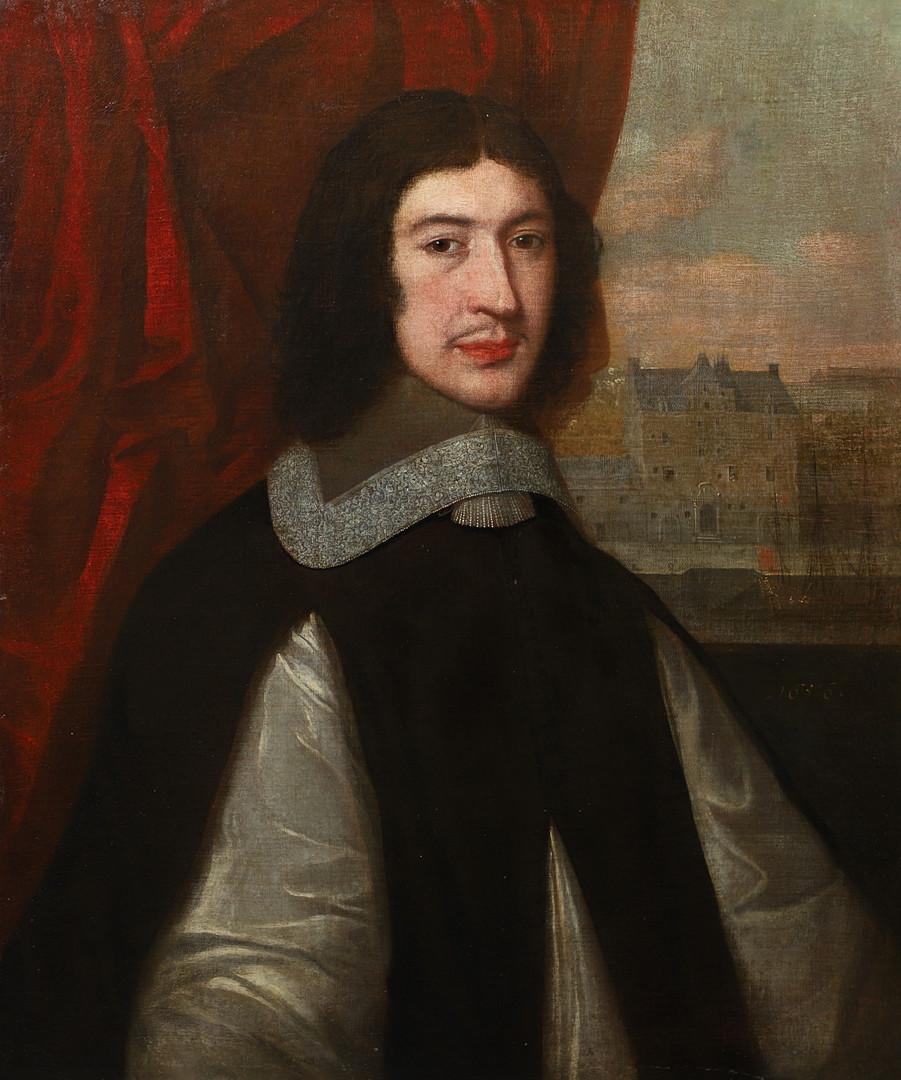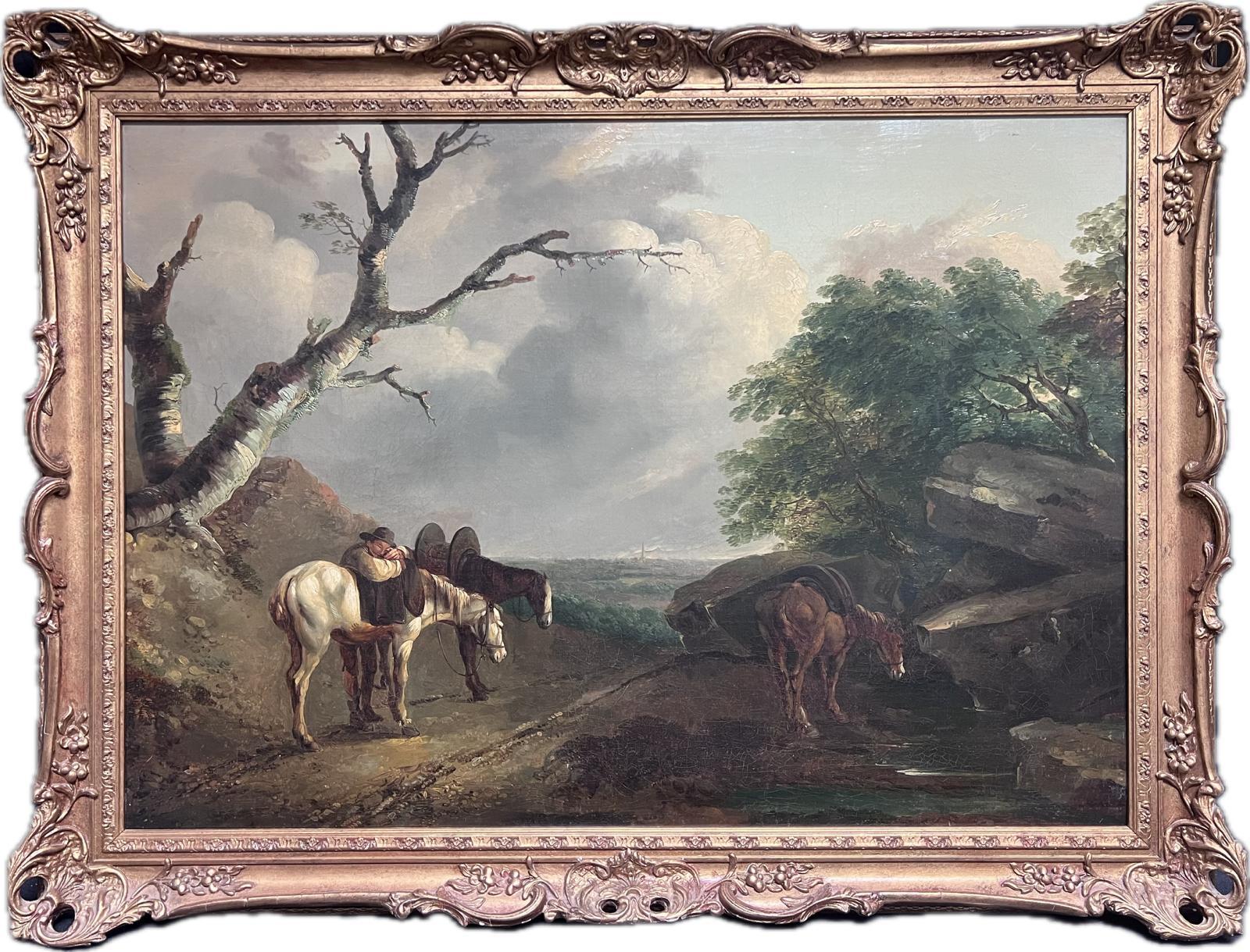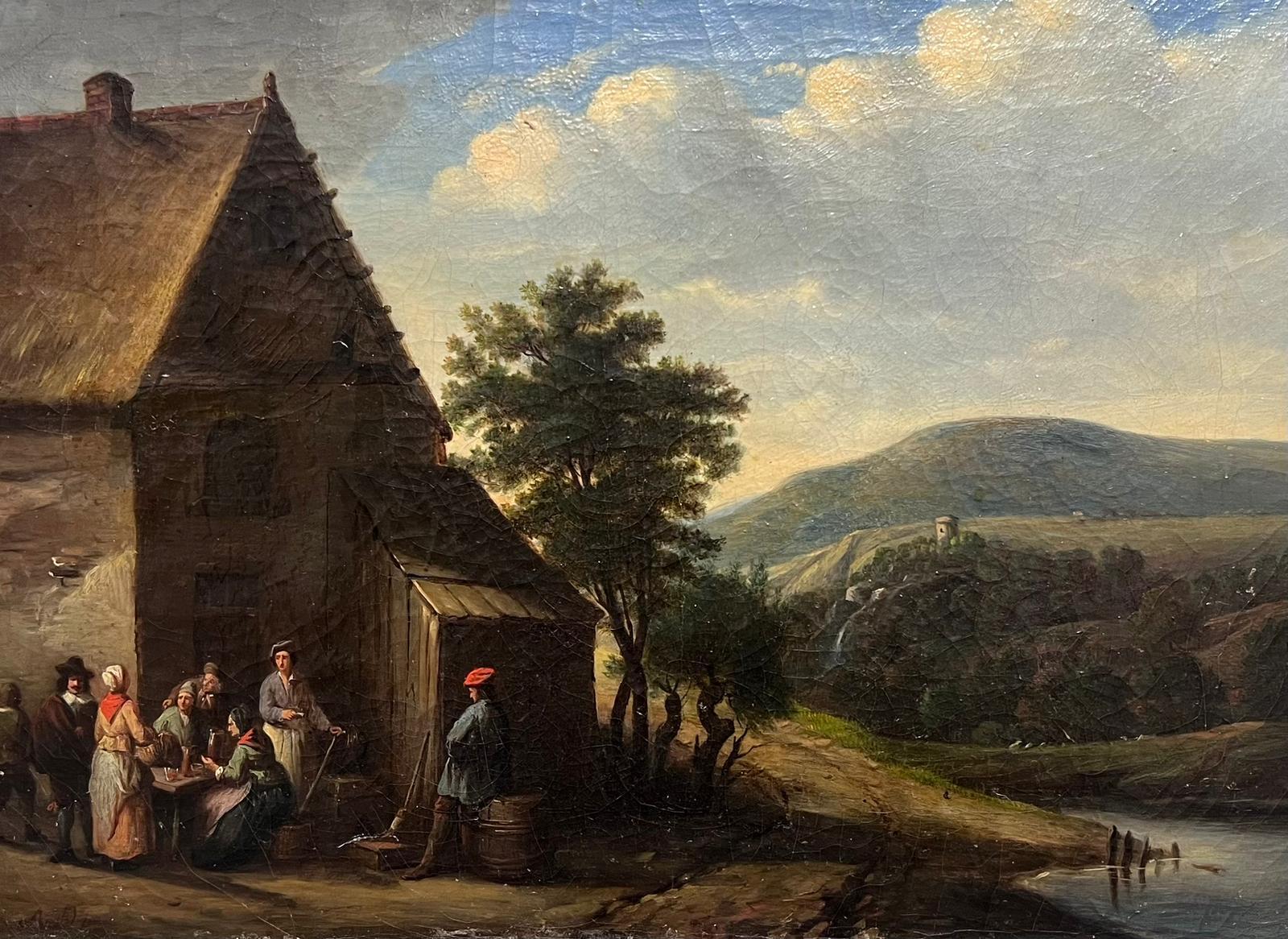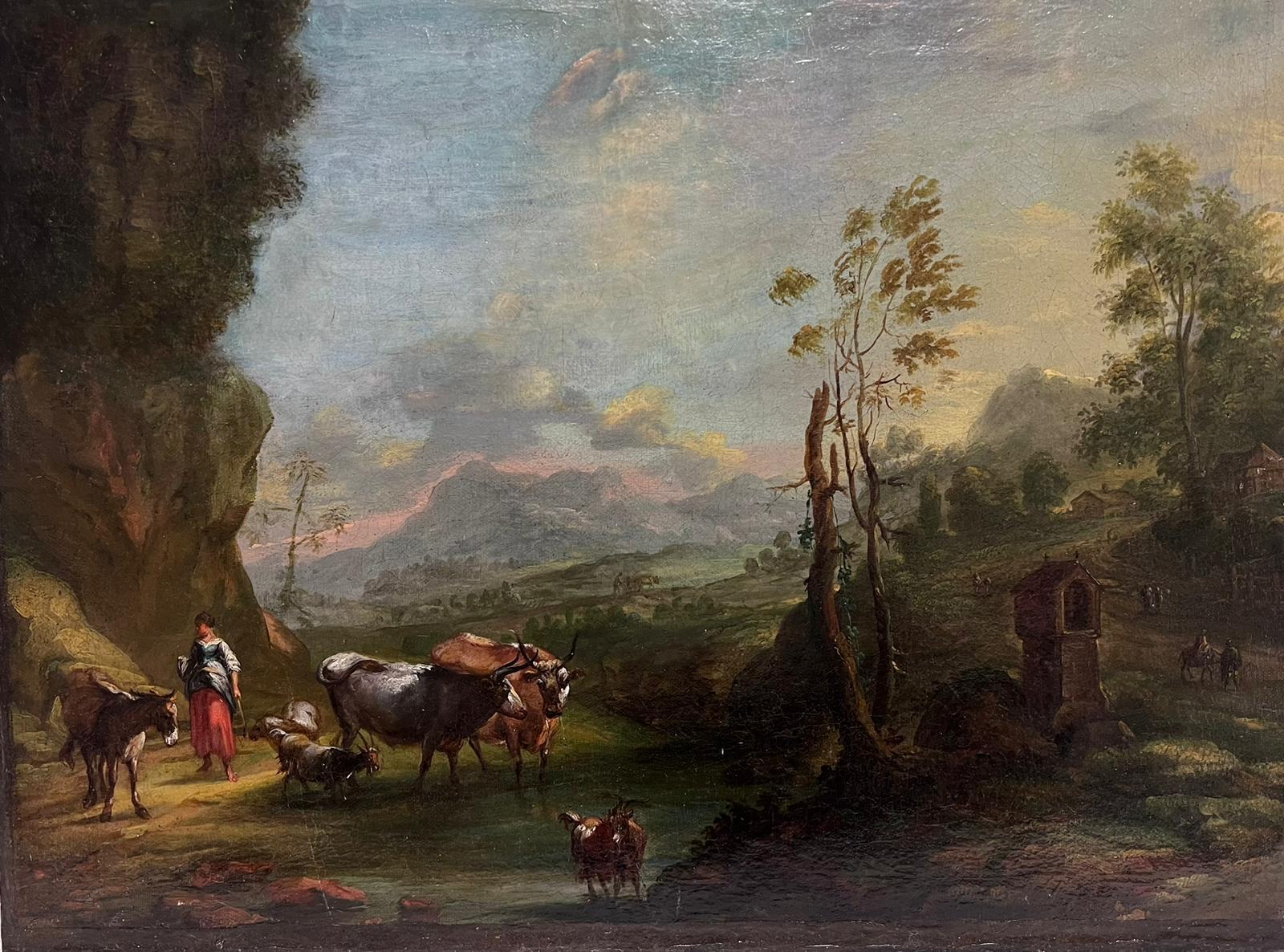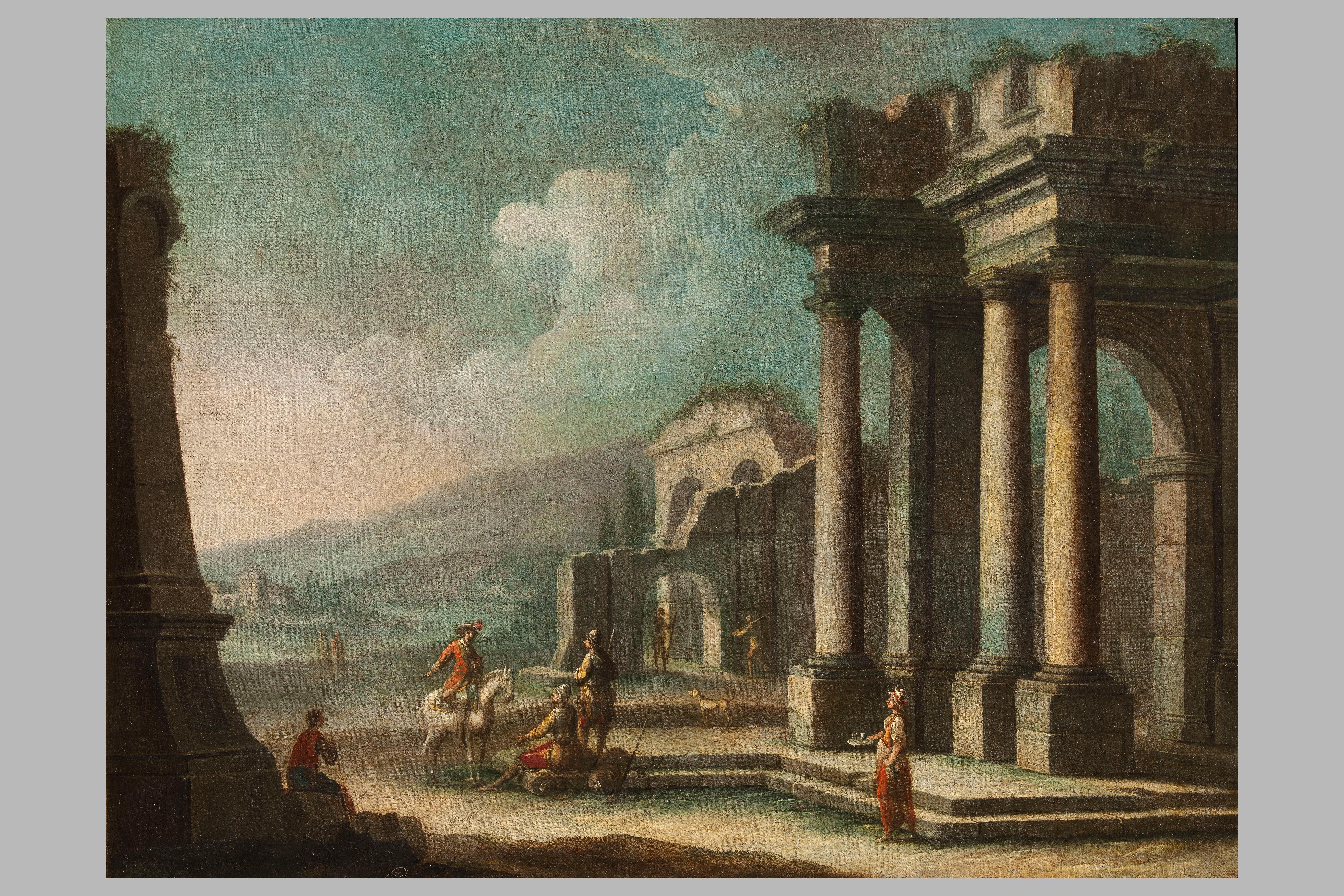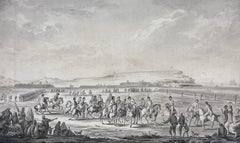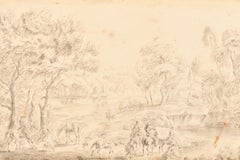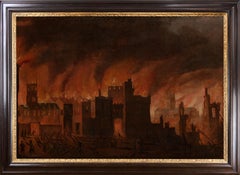
18th CENTURY FRENCH GRAND TOUR WATERCOLOUR - ROMAN MONUMENT ST. REMY PROVENCE
Want more images or videos?
Request additional images or videos from the seller
1 of 3
Auction endedBrowse Current Auctions
French artist18th CENTURY FRENCH GRAND TOUR WATERCOLOUR - ROMAN MONUMENT ST. REMY PROVENCE18th Century
18th Century
About the Item
- Creator:French artist (French)
- Creation Year:18th Century
- Dimensions:Height: 5.25 in (13.34 cm)Width: 8.5 in (21.59 cm)
- Medium:
- Movement & Style:
- Period:
- Condition:
- Gallery Location:Cirencester, GB
- Reference Number:1stDibs: LU50937907632

About the Seller
5.0
Platinum Seller
These expertly vetted sellers are 1stDibs' most experienced sellers and are rated highest by our customers.
Established in 1989
1stDibs seller since 2016
3,457 sales on 1stDibs
Typical response time: 2 hours
More From This SellerView All
- Fine Napoleonic Wars Period Battle Scene Antique Drawing Officers on HorsebackLocated in Cirencester, GloucestershireOfficers on horseback with infantry on parade Circle of Dirk Langendijk (Dutch 1748-1805) *see below watercolour on paper mounted in frame frame: 21 x 29 inches board: 10 x 16 inches...Category
18th Century Old Masters Landscape Paintings
MaterialsWatercolor
- Fine 17th Century Dutch Old Master Watercolor Drawing Hunting Party LandscapeLocated in Cirencester, GloucestershireThe Hunting Party Attributed to Dirk Maes (1659-1717) Dutch. Figures in a Classical Landscape, Watercolour and wash on paper, Mounted, unframed image 6.75" x 9.75" (17.1 x 24.7cm)...Category
17th Century Old Masters Landscape Paintings
MaterialsWatercolor
- Classical 19th Century European Painting Figures in Ancient LandscapeLocated in Cirencester, GloucestershireArtist/ School: Italian/ French School, 19th Century Title: Classical Landscape Medium: gouache painting, framed behind glass image: 15.75 x 24.5 inches Provenance: private coll...Category
19th Century Old Masters Landscape Paintings
MaterialsGouache
- Classical Landscape, Original Glazed Frame, SignedLocated in Cirencester, GloucestershireGrand Tour Study Italian School, 18th century monogrammed, lower right hand corner, Watercolour wash painting on board, glazed frame Framed size: 9 x 11 inches The painting captures...Category
18th Century Old Masters Landscape Paintings
MaterialsWatercolor
- 18th CENTURY FRENCH GRAND TOUR WATERCOLOUR - ROMAN MONUMENT ST. REMY PROVENCELocated in Cirencester, GloucestershireArtist/ School: French School, 18th century Title: The Roman Ruins at St. Remy de Provence, France. Inscribed verso to the frame: ‘Ruins at Roman Monument...Category
18th Century Old Masters Landscape Paintings
MaterialsWatercolor
- Huge 18th Century Oil Painting Classical Landscape Ancient Castle with FiguresLocated in Cirencester, GloucestershireThe Classical Landscape English School, 18th century oil painting on canvas, unframed canvas: 34.5 x 36.5 inches provenance: private collection condition: very good and sound condi...Category
18th Century Old Masters Landscape Paintings
MaterialsOil
You May Also Like
- Pavilion with waterfall, an ink wash attributed to Hubert Robert (1733 - 1808)By Hubert RobertLocated in PARIS, FRThis large wash drawing is a slightly enlarged version of a composition executed by Hubert Robert in 1761, at the end of his stay in Rome. This composition is a marvellous synthesis of the painter's art: the clatter of the waterfall, in a grandiose setting inspired by antiquity, is opposed to the intimacy of a genre scene, made up of a few peasant women performing some agricultural work. 1. The stay in Italy, an important founding stage in Hubert Robert's carrier Hubert Robert came from a privileged family of Lorraine origin, linked to the Choiseul-Stainville family, where his father was an intendant. The protection of this powerful aristocratic family enabled him to study classical art at the Collège de Navarre (between 1745 and 1751). After a first apprenticeship in the workshop of the sculptor Slodtz (1705 - 1764), he was invited by Etienne-François de Choiseul-Beaupré-Stainville (the future Duke of Choiseul, then Count of Stainville) to join him in Rome when the latter had just been appointed ambassador. Hubert Robert arrived in Rome on 4 November 1754, aged twenty-one, and remained there until 24 July 1765. Thanks to his patron, he obtained a place as a pensioneer at the Académie de France without having won the prestigious Prix de Rome. On his arrival in Rome, he frequented the studio of the painter Giovanni Paolo Panini (1691 - 1765), the inventor of the ruins painting, and also benefited from the proximity of Giovanni Battista Piranesi’s studio (1720 - 1778). During his eleven-year stay in Rome, Hubert Robert studied the great Italian masters and drew many of the great archaeological sites, multiplying the sketches which he would use throughout his career, becoming one of the masters of the "ruin landscape". Back in Paris in 1765, he was very successful. He was accepted and admitted to the Royal Academy of Painting and Sculpture on the same day, July 26th 1766, which was very unusual. He was appointed draughtsman of the king's gardens in 1784, then guard of the Royal Museum from 1784 to 1792. Arrested in 1793 and detained in the prisons of Sainte Pélagie and Saint-Lazare, he was released in 1794 after the fall of Robespierre and undertook a second trip to Italy. In 1800, Hubert Robert was appointed curator of the new Central Museum and died at his home in Paris in 1808. 2. Description of the artwork This composition, formerly called "La Cascade du Belvédère Pamphile" , is undoubtedly inspired by the water theatres of the Frascati villas. Hubert Robert presents a hemicycle of columns with rustic bossages at the foot of which is a cascade of water falls into a basin. The hemicycle is flanked by two high walls, pierced by window wells topped with antique masks...Category
1760s Old Masters Landscape Drawings and Watercolors
MaterialsInk, Watercolor
- 18th century view of the Elephant and Castle in LondonLocated in London, GBCollections: With Martyn Gregory; Judy Egerton, 1984, acquired from the above; By descent to 2014. Exhibited: London, Martyn Gregory, Exhibition of English & Continental Watercolours, 1984, no. 94. London, Lowell Libson...Category
18th Century Old Masters Landscape Paintings
MaterialsVellum, Gouache
- Early oil depicting the Great Fire of LondonLocated in London, GBThe Great Fire of London in September 1666 was one of the greatest disasters in the city’s history. The City, with its wooden houses crowded together in narrow streets, was a natural fire risk, and predictions that London would burn down became a shocking reality. The fire began in a bakery in Pudding Lane, an area near the Thames teeming with warehouses and shops full of flammable materials, such as timber, oil, coal, pitch and turpentine. Inevitably the fire spread rapidly from this area into the City. Our painting depicts the impact of the fire on those who were caught in it and creates a very dramatic impression of what the fire was like. Closer inspection reveals a scene of chaos and panic with people running out of the gates. It shows Cripplegate in the north of the City, with St Giles without Cripplegate to its left, in flames (on the site of the present day Barbican). The painting probably represents the fire on the night of Tuesday 4 September, when four-fifths of the City was burning at once, including St Paul's Cathedral. Old St Paul’s can be seen to the right of the canvas, the medieval church with its thick stone walls, was considered a place of safety, but the building was covered in wooden scaffolding as it was in the midst of being restored by the then little known architect, Christopher Wren and caught fire. Our painting seems to depict a specific moment on the Tuesday night when the lead on St Paul’s caught fire and, as the diarist John Evelyn described: ‘the stones of Paul’s flew like grenades, the melting lead running down the streets in a stream and the very pavements glowing with the firey redness, so as no horse, nor man, was able to tread on them.’ Although the loss of life was minimal, some accounts record only sixteen perished, the magnitude of the property loss was shocking – some four hundred and thirty acres, about eighty per cent of the City proper was destroyed, including over thirteen thousand houses, eighty-nine churches, and fifty-two Guild Halls. Thousands were homeless and financially ruined. The Great Fire, and the subsequent fire of 1676, which destroyed over six hundred houses south of the Thames, changed the appearance of London forever. The one constructive outcome of the Great Fire was that the plague, which had devastated the population of London since 1665, diminished greatly, due to the mass death of the plague-carrying rats in the blaze. The fire was widely reported in eyewitness accounts, newspapers, letters and diaries. Samuel Pepys recorded climbing the steeple of Barking Church from which he viewed the destroyed City: ‘the saddest sight of desolation that I ever saw.’ There was an official enquiry into the causes of the fire, petitions to the King and Lord Mayor to rebuild, new legislation and building Acts. Naturally, the fire became a dramatic and extremely popular subject for painters and engravers. A group of works relatively closely related to the present picture have been traditionally ascribed to Jan Griffier...Category
17th Century Old Masters Landscape Paintings
MaterialsCanvas, Oil
- Stag Hunting in the Vicinity of Nuremberg by a German Artist Peter von BemmelLocated in PARIS, FRThis small landscape shows a hunting scene: two riders are chasing a stag with their dogs at the edge of a forest. Signed by Peter von Bemmel, it is typical of the production of this...Category
1720s Old Masters Landscape Paintings
MaterialsCopper
- View of Piazza San Marco, a tempera signed by Giacomo Guardi (1764 - 1835)Located in PARIS, FRSigned and localized on the verso : "Vedute di parte dalla Piazza dif.a alla Loggetta e cam panil parte della Zecca ed in lontan Proc.e vechie e parte della chiesa punto preso vic...Category
Early 19th Century Old Masters Landscape Drawings and Watercolors
MaterialsTempera
- Arthur Joseph Meadows 19th Century Seascape Off CalaisBy Arthur Joseph MeadowsLocated in York, GBA very fine painting by the renowned seascape painter Arthur Joseph Meadows,Off Calais; fishing fleet returning at low tide. Housed in an antique style gilt frame the size overall is...Category
19th Century Old Masters Landscape Paintings
MaterialsOil
$6,393 Sale Price37% OffFree Shipping
Recently Viewed
View AllMore Ways To Browse
Oh La La
Spanish Countryside
Eugene C
Marine Paintings New England
1880 Large Oil Paintings
Winter Church
New Rochelle
Richard Hill
Paris Bridges Oil Painting
Parisian Street Scene Oil
Cloud Break
Small Painting Easel
Vintage California Oil
Sierra Mountains
Paris Vintage Oil Painting
Michigan Beach
Sisters Impressionist Painting
D Martin Oil Painting

